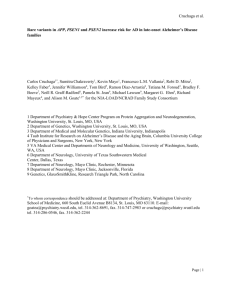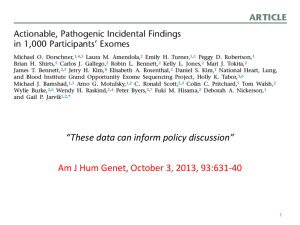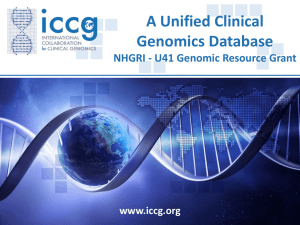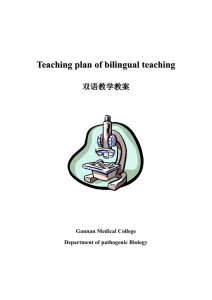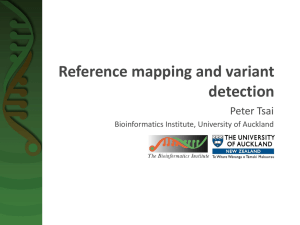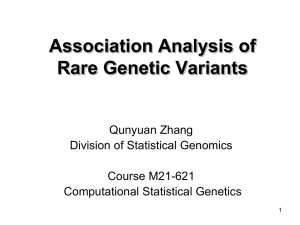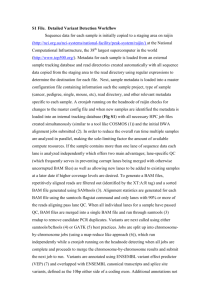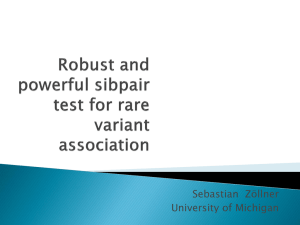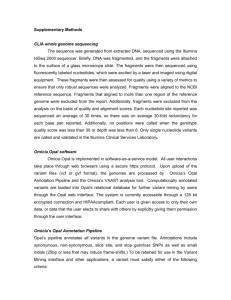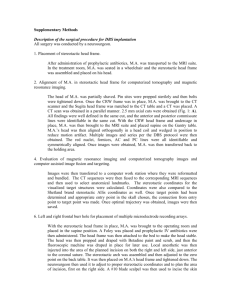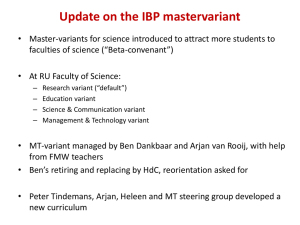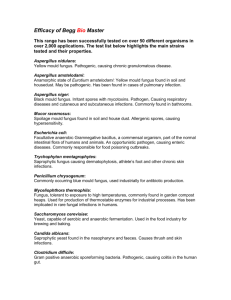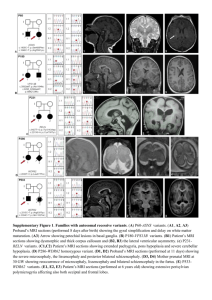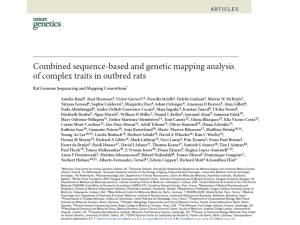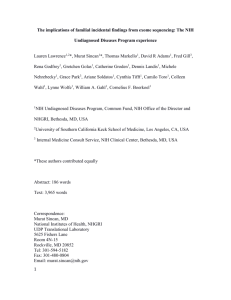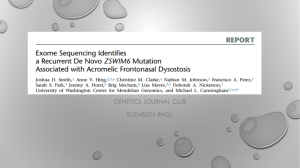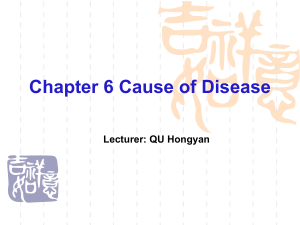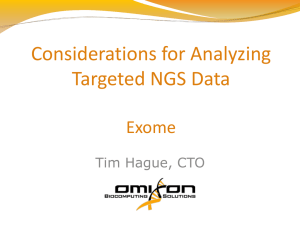Aims and objectives fo the workshop
advertisement
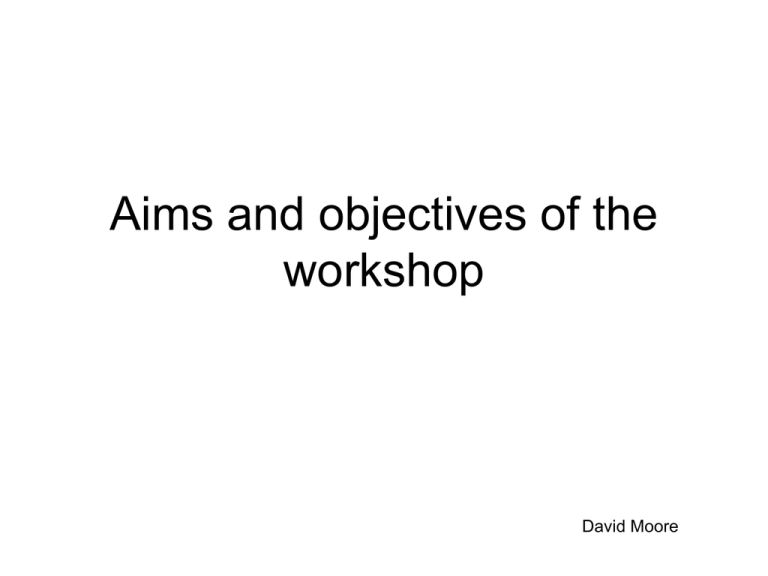
Aims and objectives of the workshop David Moore Aims • Classification of variants is subjective and NEQAS results suggest this is not a major problem • To agree and recommend: 1. 2. 3. 4. 5. 6. 7. Which class system to use Which variants to report Specific report wording for the different variant classes Appropriate follow-up testing for different variant classes What evidence to include in reports Interpretation of frequency data Interpretation of splice scores 1. Which classification system to use – 5 class • 5 path, 4 likely path, 3UV, 2 unlikely path, 1 not path – 4 class • 4 path, 3 likely path, 2 unlikely path, 1 not path – 3 class • 3 path, 2 unknown, 1 not path – A different system? 2. What classes of variants to report – Yes: classes 3, 4, 5 • Clinically relevant or potential to be. – ?: class 2 • Unlikely to be pathogenic • Available on request? – No: class 1 • Not pathogenic 3. Specific report wording for the different variant classes • Class 5 – • Class 4 – • Uncertain pathogenicity, does not confirm or exclude diagnosis Unsure about the pathogenicity and offer further work before offering further diagnostic or carrier testing. Class 2 – – • Likely pathogenic, consistent with the diagnosis Class 3 – – • Predicted to be pathogenic, this result therefore confirms the diagnosis Unlikely to be pathogenic, diagnosis not confirmed molecularly. No evidence suggesting pathogenicity but not at a high enough frequency to say it’s not pathogenic? Class 1 – – – Not pathogenic. “Commom” polymorphism. No evidence suggesting pathogenicity and at “high” frequency. 4. Appropriate follow-up testing for different variant classes • • Class 5 – Prenatal and predictive testing offered. Class 4 – Should further work be offered prior to either prenatal or predictive testing? If so, how much until deemed appropriate for PST/PND? – Unlikely that any routine work available to diagnostic labs (bar RNA) will lead to definitively calling it a 5. – Should class 4 variants be treated as an almost 5 class and anything that labs are unhappy to do further tests on be classed as a 3? – Even if there is literature, the majority of missense variants are probably still class 4’s, unless there is functional evidence? – If it is a recessive disorder would you offer PND to a family where the affected individual had: • Class 5 and class 4 variant • 2 class 4 variants 4. Appropriate follow-up testing for different variant classes • Class 3 – No to PST/PND – Segregation analysis and any other further work available is warranted – Is it always warranted, if evidence is weak, should you offer follow up? • Class 2 or 1 – No further work required? – If thought that there is a possibility of a class 2 being upgraded, then should it be a class 3? 5. What evidence to include in reports • Should labs list all of the lines of evidence used to classify variants or just refer to Alamut and any relevant references? – This variant is likely to be pathogenic. The amino acid is highly conserved across mammals and down to zebrafish, Alamut software (1) supports it as being pathogenic, the amino acid change itself doesn’t have a large Grantham score but is from a basic to a polar uncharged in a specific functional domain of the protein (EF-hand binding site) it is in the vicinity of reported known pathogenic variants and has been reported by Waldmuller et al (2) • Or – This variant is likely to be pathogenic (1,2) – (1) Assessment of pathogenicity carried out using bioinformatics software Alamut v2.2 which includes tools; AlignGVGD, SIFT, mutationTASTER polyphen and interrogation of the swissprot variation database and utilises splicing algorithms: SpliceSiteFinder-like, MaxEntScan, NNSplice and GeneSplicer. (2) Waldmuller et al in the Eur J Heart Fail 2011, vol13, p1185-1192. • Should they only list evidence when justifying the reason for follow up studies? i.e. class 3 variants. 6. Interpretation of frequency data • Frequency to class a variant as a 1, issues– Frequency of the disease- known? – Population specific – “normal” population studied • ESP uses individuals affected with heart, lung and blood disorders – Modifying effect? • c.131C>T (p.Ser44Leu) leads to early onset HSP if in-trans with pathogenic variant. • If freq of variant is “significantly higher” than that of disease, then can it be a 1? – What figure? 7. Interpretation of splice scores CFTR c.1584G>A (p.Glu528Glu) • Splicing– +/- 1, 2 (invariant sites): class 5? – Other bases- drop of over 10% in at least 3 programs- class 4? – Some exceptions (CFTR exon 10). – Degree of nt conservation an unreliable indication (esp for variants in the coding regions)
